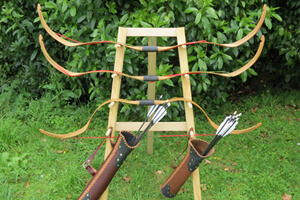Why Zisha Teapots Are So Expensive
Narrator: Zisha teapots are made by artisans like Boqin Tang. She had to study for 25 years to be considered a senior teapot maker, which lets her sell a teapot like this for $20,000 to $30,000.
Boqin Tang: A teapot like this could take me eight to 10 days, even though I am very good at making it.
Narrator: But before Tang ever touches the clay, the process starts with a unique raw material that’s disappearing. So, what does it take to make a zisha teapot? And why are they so expensive?
Zisha teapots were one of the first teapots ever made, dating back to 10th-century China. They’re named after the rare clay that is made from 350-million-year-old zisha ore. The ore can only be found in Dingshuzhen, primarily in Huanglong Mountain. It’s near the city of Yixing, which is known as China’s ceramics capital.
Zisha teapot experts have been using the same process for over 600 years. The ore is powdered, then folded and worked in a way to create small pockets that promote airflow in two directions throughout the pot. This is known as dual porosity, and zisha teapot makers and customers say this oxygen flow can intensify the flavor of tea, just like with a finely aerated wine. It’s one of a few of zisha’s special properties believed to enhance the taste of the tea. Scientific analysis shows that the mineral composition of zisha allows the temperatures to fluctuate less when these pots are put to heat. Fewer fluctuations means the flavor of the tea is more likely to be preserved.
Making zisha teapots is a painstaking process. Each step is done by hand.
Boqin Tang: It can take a whole day just to make a mouth.
Narrator: Artists first smash the prepared zisha clay into very thin layers with a wooden mallet. It can take a year to learn how to do this correctly. For a round teapot, the largest slice is formed into a tube on a revolving round plate. Boqin will then “pat the body” using a thin wooden tool, beating the clay into the desired shape. For more intricate teapots, makers scratch patterns onto the hardened clay and attach extra decor, all of which can increase the final value.
Zisha teapots are typically small and hold just a cup of water, so they don’t require much clay. But getting that little bit of clay isn’t simple or affordable. The limited supply of zisha ore boosts the cost of the raw material. To protect the resource, China’s government has banned mining in Huanglong.
Yuting Zhou: After 2005, when mining was prohibited in Huanglong Mountain, the price of raw ore increased almost 100 times. And it keeps going up every year because the ore is a nonrenewable resource.
Narrator: Boqin uses clay her family has reserved since the ‘90s. That’s also the decade she officially began making these teapots. To achieve her senior title, Boqin needed 25 years of experience, at least five gold awards for her creations, and to pass a rigorous test.
Boqin Tang: This particular teapot is the project I made for the senior craftsman test. The examiner would watch every step. And they would take pictures of every step. The test lasted for three days, which exhausted us.
Narrator: The next level for Boqin to achieve, which is also the highest, is the title of master craftsman. This requires at least 30 years of experience. Why? Because customers aren’t paying for just the finite raw material, but also for a high level of artistry.
Yuting Zhou: The popularity of the artists and the recognition of their works will also affect the price of teapots. If we see teapots as artwork, only the material could cost a lot. If we see them as art, teapots will be much more pricey. That’s why zisha teapots are very expensive.
Narrator: For tea enthusiasts, buying a senior or master’s zisha teapot is like buying functional art. Functional in that it’s made for a great tea-drinking experience, and like art because drinkers appreciate the delicate work and skill required to make it.
Boqin Tang: Making a teapot is about creating charm. And you have to keep learning. Each part of the teapot should be harmonized. And I am very strict with my techniques. Your teapot mouth should be compatible with the body. You can’t have a big body with a small mouth. And the combination of the body and the handle has its own rules.
Narrator: A telltale sign of just how well a teapot is crafted is how liquid pours from the neck. The tea should pour out splatter-free from a well-made zisha teapot. In the end, it’s the importance tea making and tea drinking have in China that makes such expensive teapots worth what customers pay.
Yuting Zhou: Let’s say I took a fancy to this teapot, so I bought it back. It’s a fate between me and it. We Chinese say it is a fate, eye-catching fate.















